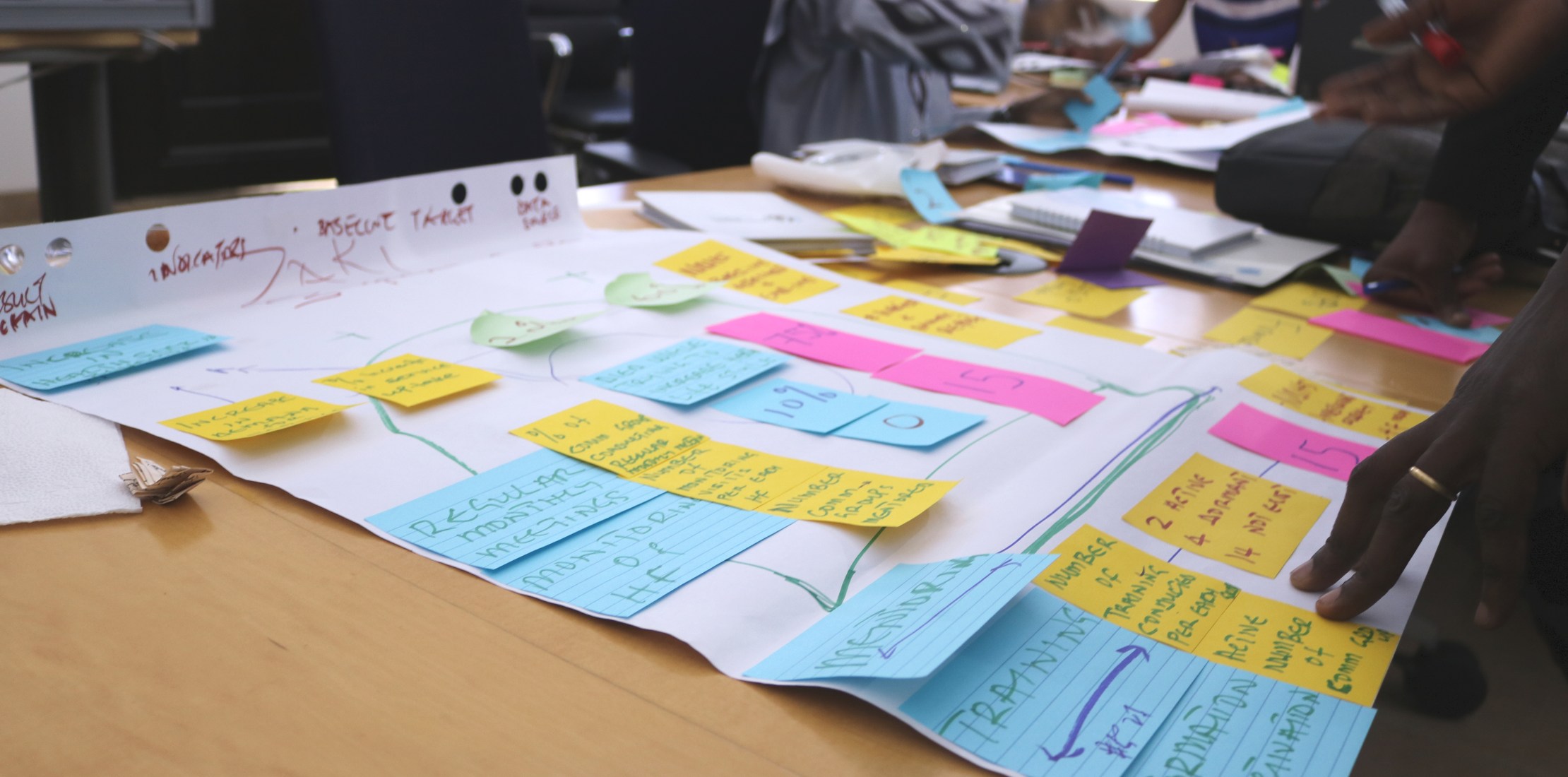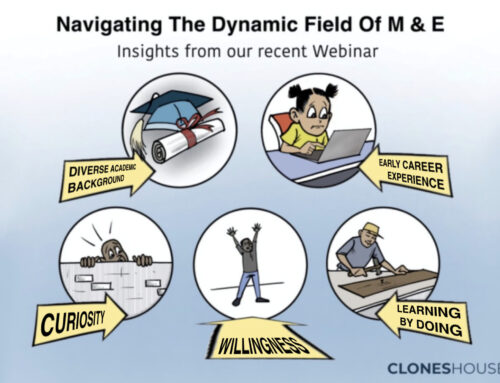One of the most fascinating questions we get from partners and participants from our past trainings, is how to start up a monitoring and evaluation unit within an organization. Monitoring and Evaluation (M&E) is a process that helps improve performance and achieve results. Its goal is to improve current and future management of outputs, outcomes, and impact. It is mainly used to assess the performance of projects, institutions, and programs set up by governments, international organizations, and Non-Governmental Organizations(NGOs). It establishes links between the past, present, and future actions.
This resource article will guide you as a monitoring and evaluation advocate, on how to start a monitoring and evaluation unit within your organization. It is ideal for Government MDAs(Ministries, Departments, Agencies), and International Organizations(INGOs) but it is not necessary for Non-Government Organizations (NGOs) as most NGOs do not have the resources to create an M&E unit, but rely on program managers to perform M&E functions. In recent times, however, we have seen some NGOs change the narrative. It is imperative to note that this article is in no way exhaustive; just simple, and concise steps.
- Based on the resources of the organization, start as a unit, and not a department.
In general, a department is bigger than a unit, as a department may have units. It is better to start off as a monitoring and evaluation unit and grow in functional capacity until the need for a full-fledged monitoring and evaluation department arises. It is also important to ensure you have adequate funding for an M&E unit or department before creation. You may want to have a discussion with your Country Representative and/or Human Resources Department in your organization to find out the current salary range for your choice M&E positions and the capacity of the organization to finance the unit or department. In any case, the creation of a department is not needed if it is not necessary, to avoid waste of human, material, and financial resources.
It is better to start off as a monitoring and evaluation unit and grow in functional capacity until the need for a full-fledged monitoring and evaluation department arises.
- Know the people who should make up the unit and their responsibilities. The M&E unit cannot function without skilled people who effectively execute the M&E tasks for which they are responsible. Therefore, understanding the roles and skills needed, the capacity, and the responsibilities of people involved in the M&E system is at the core of the successful establishment of an M&E unit.
Here is a short list of key job roles needed for an M&E unit and a generic description of their responsibilities:
- M&E Manager – Coordinates the creation and review of M&E system documentation, while managing and supervising the M&E system and the M&E unit staff. S/he also advocates for, and communicates about M&E in all the decision-making levels to build strong M&E consciousness and partnerships.
- Research Officer – Coordinates the development of a research and learning strategy and agenda, after which research results are disseminated to the decision-making levels and to other beneficiaries. Research results can also be disseminated in academic journals, research conferences, special university lectures, political/decision-making forums, etc. S/he can also represent the organization at all sub-national research forums.
- M&E Officer – Advocates for the use of output monitoring data, and with the support of the leadership of the organization, agrees on data reporting commitments (including timelines) with data providers/clerks. S/he will ensure the quality and relevance of the project’s monitoring and evaluation design, and document the results of the M & E system, while also producing periodic reports required by the M&E Manager and/or leadership of the organization.
- Communications Officer – Supports in the compilation of weekly/monthly/annual team progress reports for the leadership of the organization; and as needed, assists in procuring and taking responsibility for managing service providers for program/project/research publicity, and communication purposes.
- Data Clerk – Creates and manages a database in line with the organization’s M&E needs, provides data for all organization/ministry information products, imports data from government ministries/organizations/other stations, and conducts analysis as required by the M&E Unit. If s/he can train M&E team members on database use, that will be an added advantage.
Understanding the roles and skills needed, the capacity, and the responsibilities of people involved in the M&E system, is at the core of the successful establishment of an M&E unit.
- Clearly spell out the mandate/objectives of the M&E unit and the job description for each job role. The main purpose of the job description is to inform potential candidates of the job responsibilities and expectations, and the skills and experience required. To accomplish this, the job description must provide adequate detail to allow interested candidates (within or outside the organization) to gain an immediate sense of whether or not they are well suited for the position. Inevitably, there will be applications from candidates who do not meet the minimum criteria; however, an effective job description limits these types of applications. Creating a job description also helps you to think critically about each aspect of the positions you want to have within the M&E unit.
Creating a job description also helps you to think critically about each aspect of the positions you want to have within the M&E unit.
- Work with your Human Resources Manager/Department to assess and recruit people who have the requisite skills to occupy the above-listed job roles. Also, spot people with data collection skills within the organization (might not be more than two or three), and recruit to be a part of the M&E unit. If you do not have an internal HR manager or department, you can opt for the services of an external HR consultant that your organization can afford.
- Proceed to build a theory of change and make sure you carry everyone in the team along. If you do not have the technical skills to develop a theory of change, you can learn by being a part of any of our trainings by visiting our website and registering for a course. Otherwise, you can engage the services of a 3rd party M&E consultant like Cloneshouse Nigeria
- Think of the M&E components you can incorporate into the department (might be 3 or 4). Only a few organizations include all 12 components.
- Develop an M&E plan and present it to the leadership of your organization for endorsement and implementation.
- Remember that it can take up to 1 year to develop an M&E plan for an organization that just set out to have an M&E system/unit. The journey may not be smooth, but when the going gets tough, remember why you set out in the first place, and be determined to see the process through till completion.
“No matter how tough the chase is, you should always have the dream you saw on the first day. It will keep you motivated and rescue you from any weak thoughts.” –Jack Ma, b. 1964, Chinese Business Magnate, Investor, Philanthropist.
We hope this will be helpful to you as you make the move to create an M&E unit within your organization.
Useful Link
Monitoring and Evaluation vision statement from the Office of the Prime Minister, Uganda–Vision 2040.




